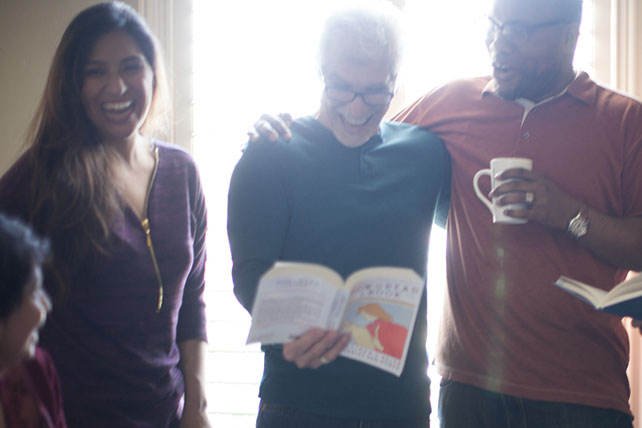As a part of the work I do with churches, I often contextualize pieces for the leaders with whom I interact. The following is a letter to one of these leaders that discusses how small groups strategies must be developed to fit the social location of the church based on the role of small groups in church history.
Dear Pastor Jerry,
As you move forward in the coaching and consulting, there are things that I will want to share with you that take things a bit deeper than we will have time to process in our monthly coaching sessions or during the days that I am with you during the consultation visits. I could just point you to some books on these topics, but I want to contextualize some key principles so that you can process and apply them to your situation more easily.
In this first letter, I want to talk about church strategy, small groups and the social location of the church. I know that this sounds like a mouthful, but as you develop groups, it’s important to realize a couple things before diving into strategies. First, the role of small groups is to form a natural way of conducting healthy living and they have always been a part of the church in some form or fashion. Anyone who tells you that small groups are new or that their small group strategy is the magic pill for developing groups should be ignored.
My second point relates to the role of small groups that have played in different eras of the church. This quick survey will help you see how the current social location of the church has a direct impact upon how people view the role of the church, the role of small groups, and the strategies that we implement.
In very broad terms, we can identify four eras, or social locations, of the Western church over the last 2,000 years. While these four eras developed chronologically, you will notice that there is some overlap between them.
#1—The Church as an Apostolic Movement
During the first three centuries of the church’s life, the people of God developed as an organic, relational, loosely-affiliated, viral movement. There were no church buildings, no seminaries, no publishing houses. They did not even have the New Testament. They just utilized homes like the foundation of the one excavated in the picture below.
- View of Information: The core of the message of the church was what Paul called “foolishness to the Greeks” and a “scandal to the Jews” (1 Cor. 1:23). The Gospel message was radical and life transforming, but far from popular.
- Influence: Records say that the influence of the church was based on the way they lived, not upon trying to attain clout in order to influence those in power.
- Role of the clergy: While there are various views on how clergy roles developed in the early church, almost all historians of the church agree that the burgeoning church movement was led by teams of people who rose up out of the life of the church.
- Authority of the church: The church possessed no official authority in the broader culture. In fact, the early church often grew greatly during times of persecution by those in authority.
- View of Faith: Faith was expressed through baptism, which was a public display of walking away from their previous religious alliance and stepping into a new one. This often came with great persecution.
- Ministry Method: The early church depended very little on specific programs of ministry or methods of organization. Their ministry was manifest through their way of love, through their way of loving one another and the world.
- Role of Small Groups: Small groups were the church as all churches were organic house churches that lived in community and shared the message of the love of Jesus through their relationships.
Many point to the apostolic movement as a model that can be mimicked and repeated in the modern-day church. While this may be true first generation Christians in cultures that have not been exposed to Western society or Western church models, the church in the West cannot revert back to some ideal church model—if one actually exists—and act like we have not been shaped by the church of the last 1,700 years.
#2—The Church at the Center
I grew up attending the church that my father and mother attended. It was a church typical of the rural South, one that resembled the church in the picture below. Membership averaged around 100 people; weekly attendance was about half that. The church was called Foote Baptist Church because the Foote family had donated the land in 1908. Because the church was the only public building, the neighborhood was called the Foote community.
Across the country, people have similar stories. A church’s steeple was once the tallest man-made point for miles. A church served as the community center, not only for worship, but also for things like town meetings, social gatherings, and school. One summer, my wife and I drove across western Kansas for vacation. As little towns surfaced on the horizon, I saw large grain silos and farmhouses surrounded by wheat fields. The most prominent features, however, were the church steeples that rose above the tree line. That architecture spoke loudly. The buildings were the tallest and most beautiful around, yet none of them were new. They stood as witnesses to the time when the church sat at the center of cultural life.
Such stories are also true in large cities. Look behind the new construction of steel and concrete and you will find cherished places of worship like First Baptist Church in Dallas, People’s United Methodist in Chicago, and Park Street Church in Boston. In fact, when People’s United Methodist Church was erected in 1924, its spire reached 568 feet into the air and was the tallest building in all of Chicago. It sat across from Chicago’s city hall, symbolizing that the church watched over the life of the city. Architecture points to much deeper aspects of the church at the center. The church played a central role in the culture during this period.












